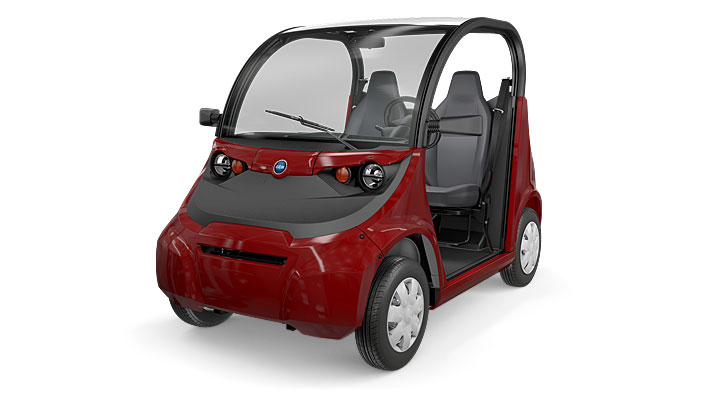Marc Cesare, Smallvehicleresource.com

New NHTSA regulations will require LSVs like the GEM e2 to emit sounds at low speeds to alert pedestrians.
New National Highway Traffic Safety Administration (NHTSA) regulations will add a sound requirement to hybrids and electric light-duty vehicles to make them easier to perceive. The requirement mandates that hybrids and electric cars with a gross vehicle weight rating of 10,000 pounds or less must emit an audible sound when traveling at speeds of of approximately 19 miles per hour or less and when moving forward or in reverse. The regulation will apply to low speed vehicles. According to NHTSA,
“The new federal safety standard will help pedestrians who are blind, have low vision, and other pedestrians detect the presence, direction and location of these vehicles when they are traveling at low speeds, which will help prevent about 2,400 pedestrian injuries each year once all hybrids in the fleet are properly equipped….Manufacturers have until Sept. 1, 2019, to equip all new hybrid and electric vehicles with sounds that meet the new federal safety standard. Half of new hybrid and electric vehicles must be in compliance one year before the final deadline.”
At first glance the regulation does not cover golf cars, even tough in many areas they are allowed to operate on local streets. From NHTSA’s point of view a golf car is not a street legal vehicle, and therefore not regulated as a motor vehicle. LSVs, on the other hand, are street legal and regulated. A gray area may be modified golf cars which may meet LSV requirements but are not purposely manufactured as LSVs. I spoke with Thomas Healy in NHTSA’s legal office and a key determining factor is the speed of the vehicle. If a vehicle’s top speed is not more than 20 mph then it is not considered a motor vehicle. However, a golf car modified to meet Federal LSV requirements and modified to have a top speed over 20 mph may technically fall under this new regulation.
I also spoke with a dealer that sells LSVs to both colleges and consumers. The colleges like the idea of these vehicles having sound as a safety feature, since they are often navigating a campus environment crowded with pedestrians. A key reason colleges purchase LSVs rather than golf cars are the vehicle’s safety features. On the other hand, according to the dealer, consumers do not like the idea of constantly hearing a noise, especially at night. In fact, one of the reasons they like electric powered LSVs is their quiet operation. The irony is the regulation could incentivize LSV owners to drive faster, maintaining a speed over 19 mph as much as possible to avoid emitting the sound.
I also spoke with a public safety officer at The Villages in Florida. They have thousands of golf cars and LSVs and many miles of multi-modal paths. He stated that the lack of noise from electric powered vehicles did not stand out as a significant safety issue. In part, he suggested that the level of awareness among residence is a mitigating factor. With the large number of golf cars and LSVs operating in the community, as well as the multi-modal paths, residents have a heightened awareness of their surroundings and the dangers while traveling on foot. He also suggested that a safety sound emanating from so many vehicles could prove to be very annoying.
Learn more: NHTSA.org (Press Release)
